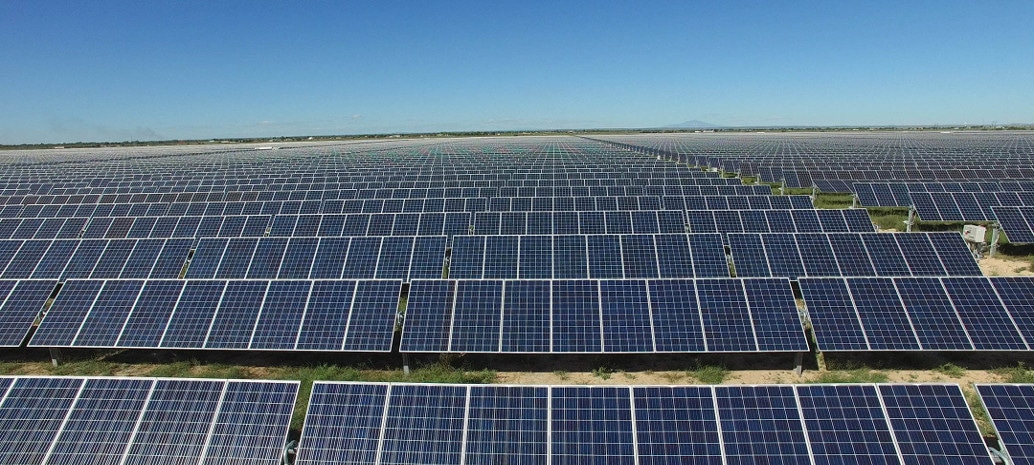Landmark Infrastructure Partners, an energy master-limited partnership (MLP) based in El Segundo, Calif., is purchasing nearly 4,000 acres of land underneath utility-scale PV projects in California for approximately $73 million.
The land in question sits under six renewable power generation tenant sites within four utility-scale solar PV projects, each of which have remaining lease terms of approximately 34 years and long-term power-purchase agreements with stable off-takers like Pacific Gas & Electric and Southern California Edison. The PV projects are owned by Recurrent Energy, the project-development subsidiary of solar panel producer Canadian Solar.
Expected to close in the fourth quarter, the land purchase will be Landmark’s first foray into the solar industry. Landmark currently owns the property under 24 wind turbines.
The MLP owns only the land underneath the PV projects. The solar projects themselves are still owned by Recurrent Energy, which in turn sells the power to the utilities. The utilities pays Recurrent, and Recurrent pays Landmark to lease the land.
Landmark’s MLP status means that it is taxed as a partnership and not required to pay corporate taxes, giving it easier access to low-cost capital for investments such as the land underneath renewable energy projects.
According to the American Council on Renewable Energy, “a partnership must generate at least 90% of its income from what the Internal Revenue Service (IRS) deems ‘qualifying’ sources [to qualify for MLP status]. For almost all MLPs, these sources include all manner of activities related to the production, processing and transportation of oil, natural gas and coal.”
“This effectively allows business to avoid double taxation at both the entity level and the shareholder level, provides a stable cash flow to investors through dividend payments and played an important role in attracting capital to fossil fuel sector.”
At present, MLPs can’t own actual renewable energy assets such as wind turbines and solar arrays because renewable energy assets are not listed as “qualifying sources” of income under the Technical and Miscellaneous Revenue Act of 1988, which allows MLPs to operate in the fossil-fuel industries.
In an effort to add renewable energy assets to the list, the MLP Parity Act was introduced for the third time on June 24, 2015 (having failed to get out of committee in 2012 and 2013) by Senator Chris Coons (DE), member of the Senate Appropriations Committee’s subcommittee on Energy and Water Development . The bill was again referred to committee, which is where it currently sits.
This content is protected by copyright and may not be reused. If you want to cooperate with us and would like to reuse some of our content, please contact: editors@pv-magazine.com.








By submitting this form you agree to pv magazine using your data for the purposes of publishing your comment.
Your personal data will only be disclosed or otherwise transmitted to third parties for the purposes of spam filtering or if this is necessary for technical maintenance of the website. Any other transfer to third parties will not take place unless this is justified on the basis of applicable data protection regulations or if pv magazine is legally obliged to do so.
You may revoke this consent at any time with effect for the future, in which case your personal data will be deleted immediately. Otherwise, your data will be deleted if pv magazine has processed your request or the purpose of data storage is fulfilled.
Further information on data privacy can be found in our Data Protection Policy.